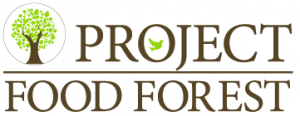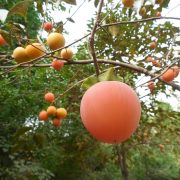Gleaning and its role in Project Food Forest
As I was walking, bicycling, and driving through Sioux Falls last year, I noticed there were many fruit trees where the fruit had either fallen to the ground or was left hanging on the tree to rot. I thought to myself, what a waste of perfectly good clean healthy food. We should not let this food go to waste when there are plenty of food insecure people in and around our community.
The team at Project Food Forest is working on three initiatives: eating, education and the environment. Today, I would like to discuss gleaning while focusing on the eating aspect of our mission and also touching on some education and the environment.
How many of you know what gleaning is? Simply put, gleaning is the process of gathering leftover grain or other produce after a harvest. The intended object of the food forests we plant is for everyone to harvest throughout the season and have access to fresh, clean and nutritious food. We realize that not all the fruits, vegetables, berries, nuts and roots will be harvested, so we plan on gleaning whatever is left over at the end of each plant’s season to give to local food pantries and missions in order to feed those most in need.
So why glean? According to Map the Meal Gap by Feeding America, there were 21,260 food insecure people in Minnehaha County. This translates into 12.1% of the population. We believe we can help lower those numbers by planting as many food forests as we can in and around the Sioux Falls metropolitan area, making sure people know about them through partnerships in the community, and not letting anything go to waste by gleaning and transporting the food to our non-profit colleagues who will get it into the hands of those who need it most. With the availability of our trained volunteers, we would also like to glean more than just our food forests, such as market farmers fields and orchards.
Gleaning also helps cut down on the amount of food wasted each year. Did you know that 40-50 percent of all food goes to waste. I find this statistic appalling in light of the number of hungry people in our country and the world. Much of it is thrown out due to its appearance. In other words grocery stores consider it to be too ugly to put on their store shelves. It still tastes the same and provides the high quality nourishment that a body needs, so why not eat it? Not only could the excess crop provide much needed meals, all the water, labor, fertilizer and fuel used to cultivate and harvest those crops are lost.
As you can see, something as simple as gleaning can have a big impact on the community. If we gather the unharvested food at the end of the season we could feed a lot more people. Helping our neighbors with such a basic necessity is something we can all be proud of. If you know of any fruit or nut trees or other food that goes to waste each year contact us so we can get it into the mouths and stomachs of those that could really use something nutritious to eat.
This post is by Chris Wittrock, Project Food Forest board member at large.



